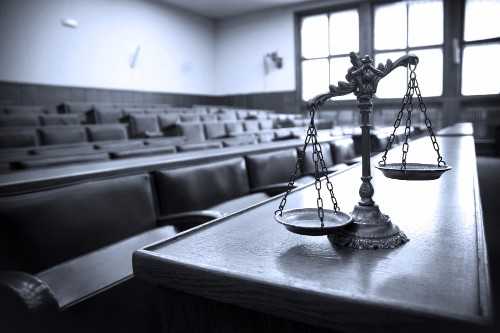Train accidents pose significant risks to public safety, and Virginia is no exception. With its extensive railway network, ensuring the safety of passengers and pedestrians is a top priority. Fortunately, advancements in technology have played a crucial role in preventing train accidents and minimizing their impact. In this article, we will explore the role of technology in preventing train accidents in Virginia and highlight the specific requirements in place. Join us as we delve into the innovative solutions that are making train travel safer than ever before.
Positive Train Control (PTC):
Positive Train Control (PTC) is an advanced technology system that aims to prevent train collisions, derailments, and other accidents caused by excessive speed. PTC utilizes a network of GPS, sensors, and communication devices to monitor train movements and enforce speed restrictions. In Virginia, the Rail Safety Improvement Act mandates the implementation of PTC systems on all Class I railroads and tracks used by passenger trains. PTC has proven to be a highly effective tool in preventing train accidents by automatically controlling train speeds and providing real-time information to train operators.
Advanced Warning Systems:
Another critical aspect of preventing train accidents is the implementation of advanced warning systems at railroad crossings. These systems employ various technologies such as flashing lights, bells, and barriers to alert drivers and pedestrians about approaching trains. In Virginia, the Department of Rail and Public Transportation (DRPT) works closely with local authorities and railroad companies to ensure the installation and maintenance of reliable and effective warning systems across the state.
Video Surveillance and Analytics:
Video surveillance systems are increasingly being employed to monitor train operations and identify potential safety hazards. High-resolution cameras strategically placed along railway lines can capture real-time footage, allowing for the detection of trespassing, unauthorized access, or other dangerous activities. Additionally, advanced video analytics technologies can analyze the collected data to automatically detect anomalies, such as objects on tracks or individuals in restricted areas, triggering immediate alerts to train operators and authorities.
Communication and Signaling Systems:
Effective communication is vital in ensuring safe and efficient train operations. Modern communication and signaling systems enable seamless coordination between train operators, dispatchers, and maintenance personnel. These systems employ radio, wireless, and satellite technologies to facilitate clear and timely communication, reducing the risk of misunderstandings or errors that could lead to accidents. In Virginia, the Federal Railroad Administration (FRA) enforces strict regulations regarding the maintenance and functionality of communication and signaling systems.
Training and Education:
While technological advancements provide invaluable support in preventing train accidents, human factors cannot be overlooked. Proper training and education programs are essential for train operators, maintenance personnel, and other relevant staff to ensure they are equipped with the knowledge and skills needed to operate and maintain the technology effectively. In Virginia, the Virginia Department of Rail and Public Transportation (DRPT) works in collaboration with railroad companies to establish comprehensive training programs that comply with industry standards and regulations.
However, it is important to note that technology alone cannot completely eliminate train accidents. A comprehensive approach that combines technology, infrastructure improvements, rigorous safety protocols, and public awareness is necessary to ensure a safe railway system. Collaboration between government agencies, railway companies, and legal entities is crucial in implementing and enforcing these measures.
In addition to the technological advancements discussed, ongoing research and development efforts are continuously improving safety measures in the railway industry. Innovations such as advanced track inspection technologies, improved braking systems, and enhanced train control systems are being explored to further enhance the safety of train operations.
Furthermore, public education and awareness campaigns play a vital role in preventing train accidents. Informing the public about the dangers of trespassing on railway tracks, the importance of obeying warning signs and signals, and practicing caution at railroad crossings are all essential in promoting a safer environment. By raising awareness and educating individuals about the risks associated with train travel, we can reduce the likelihood of accidents caused by human error or negligence.
At NovaLegalGroup, P.C., we understand the importance of preventing train accidents and safeguarding the well-being of our community. With our expertise in personal injury law, we are committed to advocating for victims of train accidents and holding accountable those responsible for negligence. If you or a loved one has been affected by a train accident in Virginia, our dedicated team of legal professionals is here to provide you with the support and guidance you need. Contact NovaLegalGroup, P.C. today for a free consultation.
Technology continues to revolutionize the prevention of train accidents in Virginia and across the country. Through the implementation of advanced systems such as Positive Train Control, advanced warning systems, video surveillance and analytics, and robust communication and signaling networks, the risk of train accidents has been significantly reduced. Coupled with comprehensive training programs for personnel, these technological advancements are crucial in ensuring the safety of passengers, pedestrians, and railway employees. By embracing technology and adhering to the requirements set forth by regulatory bodies, we can create a safer and more efficient railway system for all.
